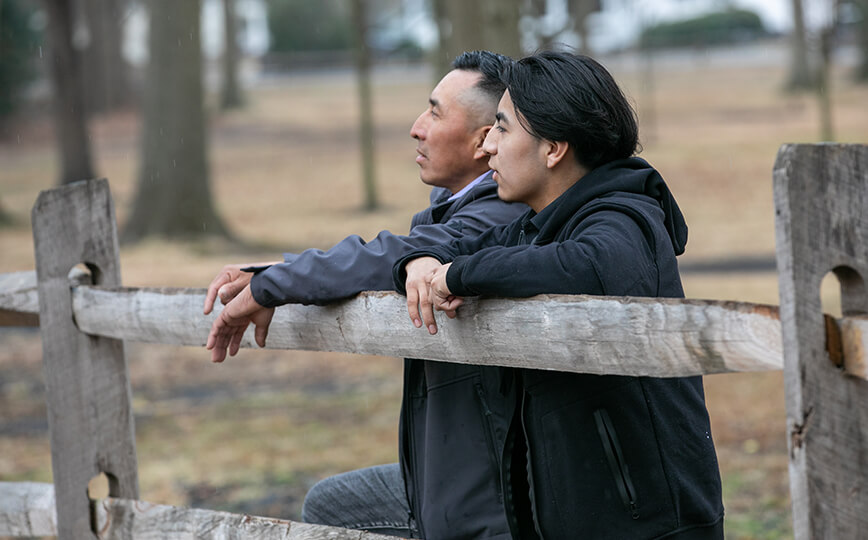Advocating for Once-Separated Families
“Tanok” and “Kabil,” a father and son, were part of a small Indigenous community in Guatemala. In an effort to drive them from the land their family farmed, a rival group beheaded Tanok’s father and uncle (Kabil’s grandfather and great uncle) and sent notes that threatened the same fate for Tanok and Kabil. They fled together in early 2018 and came to the United States.
Immigration agents picked them up near El Paso, Texas, and placed them together in one of the “freezers,” so named because these temporary holding cells are kept very cold and brightly lit 24 hours a day. After three days in the freezer, Tanok and Kabil were forcibly separated. Agents handcuffed Tanok in front of his son and told them to say goodbye “because they were not going to see each other again.” The government sent Kabil, then 12 years old, to a shelter in Texas, where he cried every night and stopped eating and sleeping. The authorities transported Tanok to a detention center in New Mexico, where he had repetitive nightmares about the separation, along with severe head- and stomachaches. Father and son were separated for 37 days.
With variations in the harrowing details, this story has been repeated for thousands of families. The numbers of separated families have been elusive from the beginning because the government did not bother to keep records. In June 2018, when it blocked the family separation policy in Ms. L v. ICE, a class action filed by the ACLU, the federal court condemned the government’s inability even to identify the families affected: “The unfortunate reality is that under the present system migrant children are not accounted for with the same efficiency and accuracy as property.” Over the years since 2018, the government, a steering committee assembled by the ACLU, and a host of others have attempted to reconstruct which parents and children were subject to the policy. The numbers remain in constant flux.
Still, we know something by virtue of the firm’s longtime participation in the Ms. L case on behalf of several legal service providers that represent immigrant children in federal custody. On September 22, 2021, the government filed a sworn statement in Ms. L acknowledging “5,648 children known to have been separated between July 1, 2017 and January 20, 2021.” While their family stories have fallen out of the headlines, thousands of these children and their parents remain in the United States, and the vast majority are still waiting for justice.
Given the large number of affected families, the data are alarming on how few have had the opportunity to secure permanent immigration status. A small subset of parents and children have opted into settlement procedures that allowed them to pursue asylum. Among them, the government reported on November 3, 2021, that it had granted asylum to five parents and six children. Nonprofits associated with the court-appointed steering committee track larger numbers, and they estimate that between one and two percent of families have won permanent status so far. The government has not denied relief to the rest; their cases are either pending along with more than 1.5 million other cases in the immigration court backlog, or the government has not initiated deportation proceedings.
Tanok and Kabil are among the lucky few. The firm won asylum for Kabil in May 2021 and for Tanok in September. As asylees, they are entitled to remain here safely together, and in due course they will be eligible to apply for lawful permanent residency and, later, citizenship.
The firm is representing Tanok, Kabil, and other formerly separated families, not only in their immigration proceedings but also in damages actions against the federal government for compensation for the trauma inflicted on them. At the same time, we are closely watching the progress of the Biden Administration’s Family Reunification Task Force and the lawyers in the Ms. L case as they negotiate about what immigration status should be available to formerly separated families. We hope these conversations move ahead swiftly. The families have waited long enough for the safety and stability they hoped to find here.
The families have waited long enough for the safety and stability they hoped to find here.

